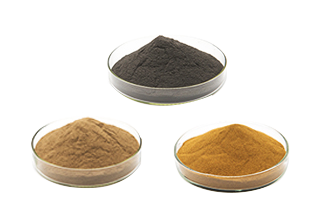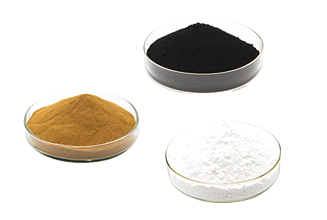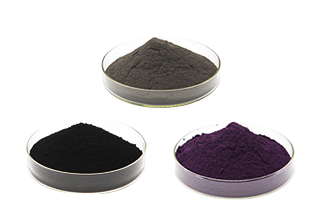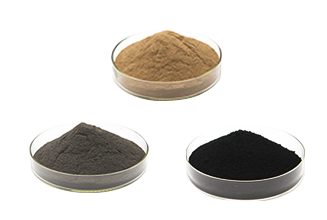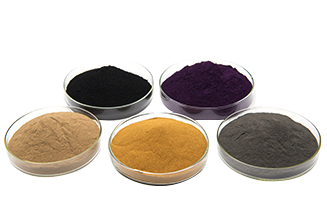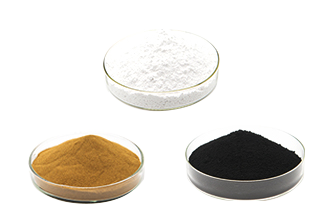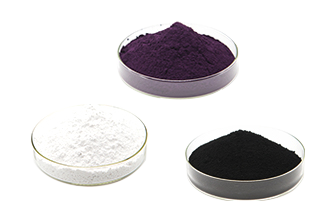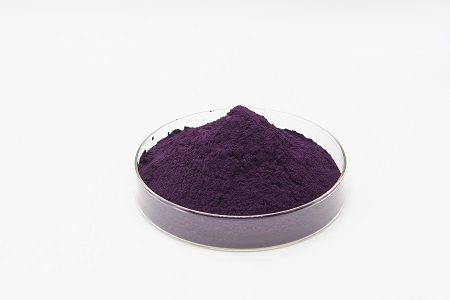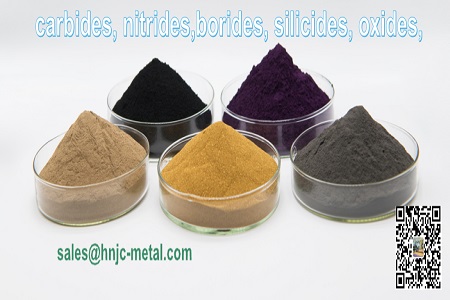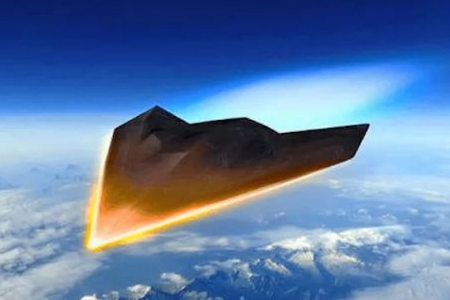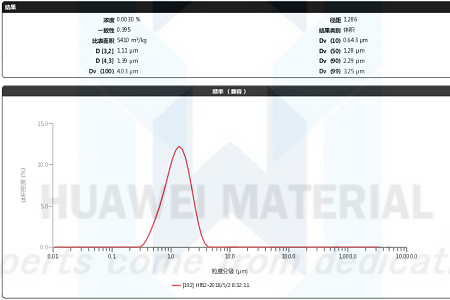Silicon carbide, Boron carbide - the "king" of the bulletproof industry
In everyone's impression, ceramics are fragile. However, after being processed by modern technology, ceramics have been transformed into a new kind of hard and high-strength material, especially in the field of bulletproof materials that have special physical performance requirements.
What are the requirements of bulletproof ceramics for material properties?
Because of the brittleness of the ceramic itself, it fractures rather than plastically deforms when impacted by a projectile. Under tensile loading, fracture first occurs at inhomogeneities such as pores and grain boundaries. Therefore, to minimize microscopic stress concentrations, armor ceramics should be high-quality ceramics with low porosity (up to 99% of the theoretical density value) and fine-grained structure.
Since the 21st century, bulletproof ceramics have developed rapidly and have many types, including alumina, silicon carbide, boron carbide, silicon nitride, titanium boride, etc. Among them, alumina ceramics (Al2O3), silicon carbide ceramics (SiC), carbide Boron ceramics (B4C) are the most widely used. Alumina ceramics have the highest density, but relatively low hardness, low processing threshold and low price. According to the purity, they are divided into 85/90/95/99 alumina ceramics, and the corresponding hardness and price also increase in turn.
Silicon carbide bulletproof ceramics
Silicon carbide has extremely strong covalent bonds and still has high-strength bonding at high temperatures. This structural feature endows silicon carbide ceramics with excellent strength, high hardness, wear resistance, corrosion resistance, high thermal conductivity, and good heat resistance. At the same time, the price of silicon carbide ceramics is moderate and cost-effective, and it is one of the most promising high-performance armor protection materials. SiC ceramics have a broad space for development in the field of armor protection, and their applications in individual soldier equipment and special vehicles tend to be diversified. When used as a protective armor material, considering factors such as cost and special applications, small-sized ceramic panels and composite material backplanes are usually bonded to form a ceramic composite target plate to overcome the failure of ceramics due to tensile stress and ensure projectiles. When penetrating, only a single piece is smashed without destroying the whole armor.
Boron carbide bulletproof ceramics
Boron carbide is a superhard material with hardness second only to diamond and cubic boron nitride among known materials, with a hardness of up to 3000 kg/mm2; low density, only 2.52 g/cm3, which is 1/3 of steel; elastic modulus High, 450GPa; high melting point, about 2447 ℃; low thermal expansion coefficient, high thermal conductivity. In addition, boron carbide has good chemical stability, acid and alkali corrosion resistance, and does not react with acid, alkali and most inorganic compound liquids at room temperature. corrosion; and non-wetting and non-interaction with most molten metals. Boron carbide also has a good ability to absorb neutrons, which other ceramic materials do not have. The density of B4C is the lowest among several commonly used armor ceramics, and its high elastic modulus makes it a good choice for military armor and space field materials. The main problems of B4C are its high price (about 10 times that of alumina) and high brittleness, which limit its wide application as a single-phase protective armor.
Preparation method of bulletproof ceramics
From the characteristics of the preparation process of ceramic materials, it can be seen that the current process development is relatively mature: reaction sintering, pressureless sintering and liquid phase sintering. More likely. Hot pressing sintering and hot isostatic pressing sintering are relatively limited by product size, with high production costs and low maturity. Ultra-high pressure sintering, microwave sintering, spark plasma sintering and plasma beam melting are the least mature methods in general, and are relatively novel preparation methods, but they have higher requirements for technology and equipment, and require high production costs. The feasibility is low, and it is often used in the experimental exploration stage, which has little significance for practical application and is difficult to achieve industrialization.
Preparation process of typical bulletproof ceramics
Bulletproof ceramic upgrade
Although silicon carbide and boron carbide have great ballistic potential, the problems of poor fracture toughness and brittleness of single-phase ceramics cannot be ignored. The development of modern technology has put forward requirements for the functionality and economy of bulletproof ceramics: multi-functional, high-performance, lightweight, low-cost and safe. Therefore, in recent years, experts and scholars hope to achieve the strengthening, toughening, lightweight and economical of ceramics through micro-adjustment including multi-component ceramic system composites, functionally graded ceramics, layered structure design, etc., and such armor is compared with today's armor Light weight, better improve the maneuverability of combat units.
Functionally graded ceramics exhibit regular changes in the properties of component materials through microscopic design. For example, titanium boride and metal titanium and metal/ceramic composite systems such as aluminum oxide, silicon carbide, boron carbide, silicon nitride and metal aluminum have a gradient change in performance along the thickness position, that is, the transition from high hardness to high toughness bulletproof ceramics are prepared. .
Nano-multiphase ceramics are multiphase ceramics formed by adding sub-micron or nano-scale dispersed particles to matrix ceramics. Such as SiC-Si3N4-Al2O3, B4C-SiC, etc., the hardness, toughness and strength of ceramics have a certain improvement. According to reports, western countries are studying the sintering of nano-scale powders to prepare ceramics with a grain size of tens of nanometers to achieve material strength and toughness. Bulletproof ceramics are expected to achieve a major breakthrough in this regard.
What are the requirements of bulletproof ceramics for material properties?
Because of the brittleness of the ceramic itself, it fractures rather than plastically deforms when impacted by a projectile. Under tensile loading, fracture first occurs at inhomogeneities such as pores and grain boundaries. Therefore, to minimize microscopic stress concentrations, armor ceramics should be high-quality ceramics with low porosity (up to 99% of the theoretical density value) and fine-grained structure.
Since the 21st century, bulletproof ceramics have developed rapidly and have many types, including alumina, silicon carbide, boron carbide, silicon nitride, titanium boride, etc. Among them, alumina ceramics (Al2O3), silicon carbide ceramics (SiC), carbide Boron ceramics (B4C) are the most widely used. Alumina ceramics have the highest density, but relatively low hardness, low processing threshold and low price. According to the purity, they are divided into 85/90/95/99 alumina ceramics, and the corresponding hardness and price also increase in turn.
Silicon carbide bulletproof ceramics
Silicon carbide has extremely strong covalent bonds and still has high-strength bonding at high temperatures. This structural feature endows silicon carbide ceramics with excellent strength, high hardness, wear resistance, corrosion resistance, high thermal conductivity, and good heat resistance. At the same time, the price of silicon carbide ceramics is moderate and cost-effective, and it is one of the most promising high-performance armor protection materials. SiC ceramics have a broad space for development in the field of armor protection, and their applications in individual soldier equipment and special vehicles tend to be diversified. When used as a protective armor material, considering factors such as cost and special applications, small-sized ceramic panels and composite material backplanes are usually bonded to form a ceramic composite target plate to overcome the failure of ceramics due to tensile stress and ensure projectiles. When penetrating, only a single piece is smashed without destroying the whole armor.
Boron carbide bulletproof ceramics
Boron carbide is a superhard material with hardness second only to diamond and cubic boron nitride among known materials, with a hardness of up to 3000 kg/mm2; low density, only 2.52 g/cm3, which is 1/3 of steel; elastic modulus High, 450GPa; high melting point, about 2447 ℃; low thermal expansion coefficient, high thermal conductivity. In addition, boron carbide has good chemical stability, acid and alkali corrosion resistance, and does not react with acid, alkali and most inorganic compound liquids at room temperature. corrosion; and non-wetting and non-interaction with most molten metals. Boron carbide also has a good ability to absorb neutrons, which other ceramic materials do not have. The density of B4C is the lowest among several commonly used armor ceramics, and its high elastic modulus makes it a good choice for military armor and space field materials. The main problems of B4C are its high price (about 10 times that of alumina) and high brittleness, which limit its wide application as a single-phase protective armor.
Preparation method of bulletproof ceramics
From the characteristics of the preparation process of ceramic materials, it can be seen that the current process development is relatively mature: reaction sintering, pressureless sintering and liquid phase sintering. More likely. Hot pressing sintering and hot isostatic pressing sintering are relatively limited by product size, with high production costs and low maturity. Ultra-high pressure sintering, microwave sintering, spark plasma sintering and plasma beam melting are the least mature methods in general, and are relatively novel preparation methods, but they have higher requirements for technology and equipment, and require high production costs. The feasibility is low, and it is often used in the experimental exploration stage, which has little significance for practical application and is difficult to achieve industrialization.
Preparation process of typical bulletproof ceramics
Bulletproof ceramic upgrade
Although silicon carbide and boron carbide have great ballistic potential, the problems of poor fracture toughness and brittleness of single-phase ceramics cannot be ignored. The development of modern technology has put forward requirements for the functionality and economy of bulletproof ceramics: multi-functional, high-performance, lightweight, low-cost and safe. Therefore, in recent years, experts and scholars hope to achieve the strengthening, toughening, lightweight and economical of ceramics through micro-adjustment including multi-component ceramic system composites, functionally graded ceramics, layered structure design, etc., and such armor is compared with today's armor Light weight, better improve the maneuverability of combat units.
Functionally graded ceramics exhibit regular changes in the properties of component materials through microscopic design. For example, titanium boride and metal titanium and metal/ceramic composite systems such as aluminum oxide, silicon carbide, boron carbide, silicon nitride and metal aluminum have a gradient change in performance along the thickness position, that is, the transition from high hardness to high toughness bulletproof ceramics are prepared. .
Nano-multiphase ceramics are multiphase ceramics formed by adding sub-micron or nano-scale dispersed particles to matrix ceramics. Such as SiC-Si3N4-Al2O3, B4C-SiC, etc., the hardness, toughness and strength of ceramics have a certain improvement. According to reports, western countries are studying the sintering of nano-scale powders to prepare ceramics with a grain size of tens of nanometers to achieve material strength and toughness. Bulletproof ceramics are expected to achieve a major breakthrough in this regard.

